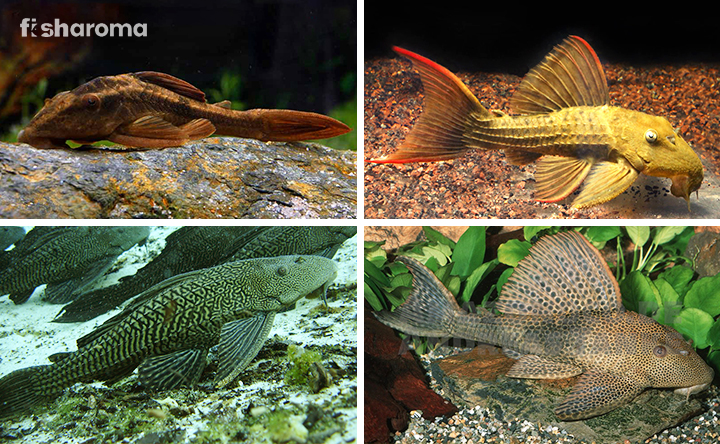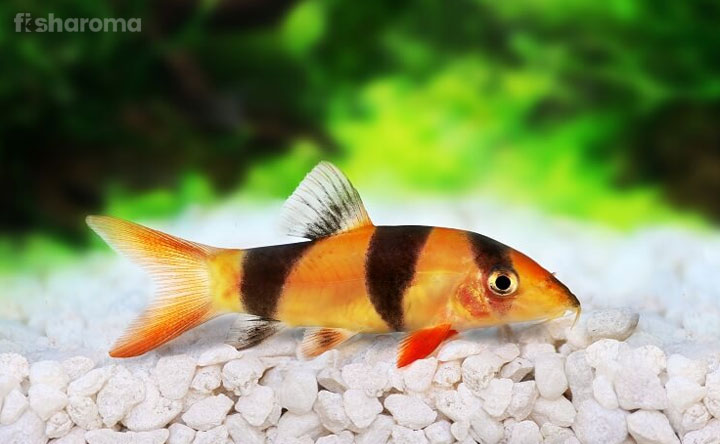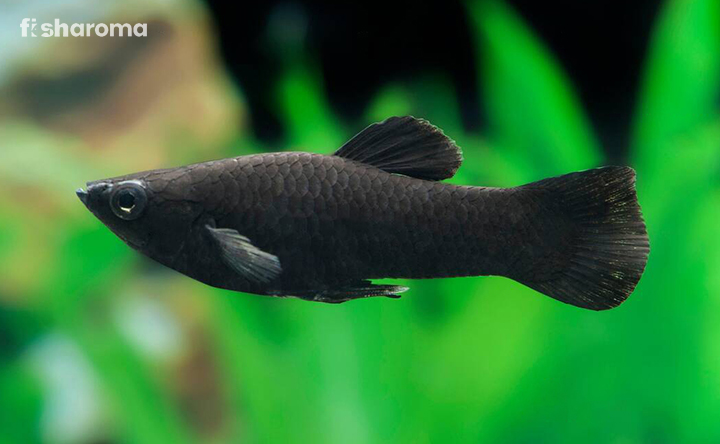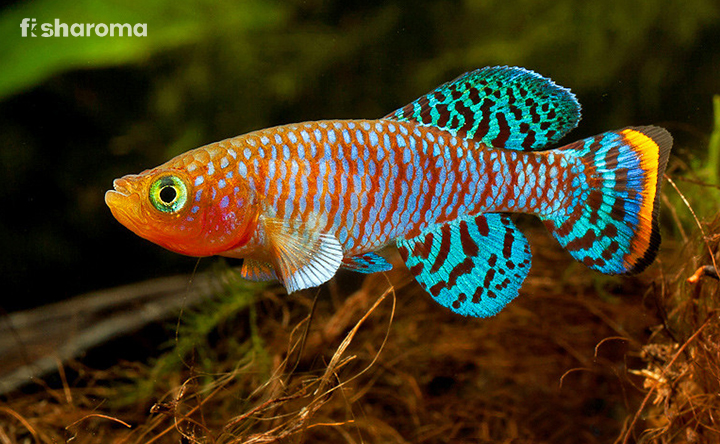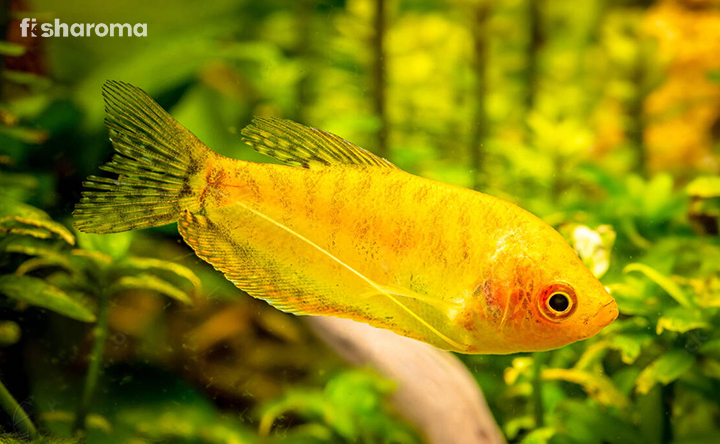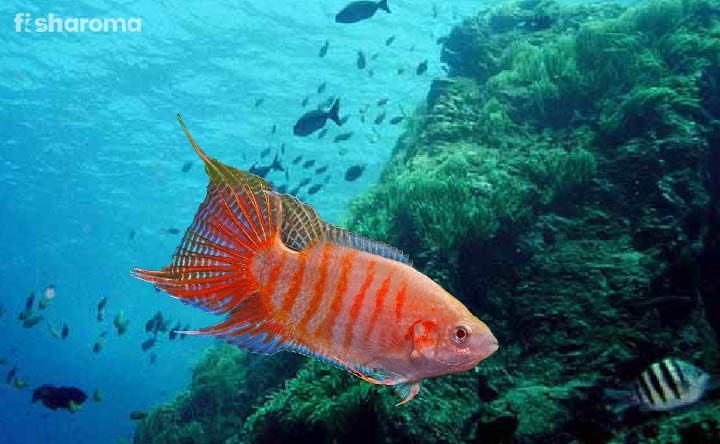Cherry Barb – A Complete Care Guide, Breeding, Compatibility, Diet
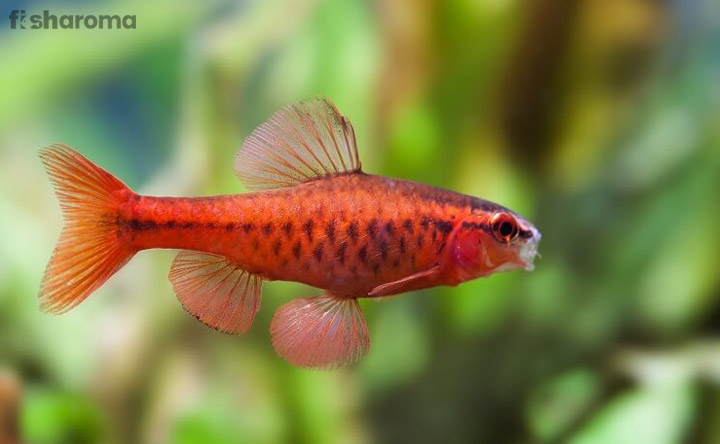
If you are looking for a species to host in your aquarium that will check the boxes for being tiny, brightly-colored, as well as peaceful, you need to go to the pet store next to your home and ask for a Cherry Barb. Often counted among the most popular freshwater ornamental fish, they are going to add a different dimension to your tank. But before you bring one home, let us help you understand how you can pet it healthily. So, here’s our all-inclusive care guide for Cherry Barb.
Key Specifications of Cherry Barb
Before breaking down the details of the care guide for Cherry Barbs, take a look at their key specifications.
| Scientific Name | Puntius titteya |
| Family | Cyprinidae |
| Origin | Sri Lanka |
| Size | Up to 2” (5 cm) |
| Color | Fawn, Red |
| Care Level | Easy |
| Lifespan | 5-6 Years |
| Temperament | Peaceful |
| Compatibility | Moderate |
| Tank Size | 25-Gallons |
| Diet | Omnivore |
Overview
Cherry Barb (Puntius titteya) belongs to the Cyprinidae family, which is the largest family of fish in the world, having under its wing an astonishing number of 2,000 species, spread across the world. However, don’t let that fool you into believing that they have over-populated the water bodies; in fact, quite the contrary. Loss of natural habitat and poaching has led to their numbers going down over the years. Naturally, this means that they are thriving in the fishkeeping industry.
They derive their name from the color of their bodies, which we are going to discuss in detail later in the ‘Color of Cherry Barb’ section. Pretty undemanding and peaceful by nature, they are a great choice for community tanks.
Now that you have an overall idea about these miniature beauties, let us dig deep into their specifications.
Origin & Habitat of Cherry Barb
Mostly found in heavily shaded, calm bodies of water, Cherry Barbs are native to Sri Lanka, specifically to the Kelani and Nilwala River-valleys. However, in recent times, they are also found in abundance in Colombia and Mexico. They thrive in a tropical climate that witnesses little to no change in its temperature.
You will see them living out in the streams and ponds of rainforests. Their love for heavily shaded areas often makes them reside in shallow, slow-moving water that has a substrate of silt along with leaf litter. Presence of thick vegetation in the water where they live further blocks light from penetrating the water.
Appearance of Cherry Barb
Cherry Barbs have an elongated slender body, almost in the shape of a torpedo with a lateral stripe running down from its head to tail. The males tend to be slimmer than the females, who have a rounder shape to their stomach. This means that this species showcases dimorphism.
They have a forked tail and only one dorsal fin, along with an inferior mouth and a pair of barbs.
Size of Cherry Barb
Being a relatively small species among their family, they grow up to a length of 1-2” (2.5-5 cm).
Color of Cherry Barb
The cherry-like red color is what makes this species a sight to behold, and this redness intensifies during spawning. It should be noted that there are striking differences between the colors of a male and a female Cherry Barb. The males are the ones that bear the aforementioned cherry red color.
While the males have a greenish-brown back with a red bottom, the females have a yellow-gray body with a whitish bottom. This gives the females almost a fawn color. The lateral line in both the males and females are brownish-red in color and the fins vary anywhere between yellow and red.
Behavior of Cherry Barb
Cherry Barbs display schooling behavior, meaning not only do they stay together for social purposes, but they also swim together, creating a beautiful imagery. There is also an underlying survival aspect to this behavior of theirs since they know if they stay in a pack, they are more likely to survive the attack of a predator.
Peaceful in temperament and shy by nature, they stay highly active, spending the majority of their time swimming from one place to another.
Lifespan of Cherry Barb
On average, a Cherry Barb lives up to 5-6 years and in few cases, their lifespan gets extended to seven years.
Diet of Cherry Barb
Omnivore by nature, Cherry Barbs feed on both meaty foods and plant matters. In essence, they have a wide range of dietary choices which allows you to not worry a lot about what to feed them since they pretty much eat everything. From live insects to worms, crustaceans to algae, even vegetables, you name it and they eat it.
A proper diet of a Cherry Barb should include the following items:
- Brine Shrimp (Live or frozen)
- Bloodworms (Live or frozen)
- Daphnia (Live or Frozen)
- Small insects
- Zooplankton
- Diatom
- Algae
- Plant Matter
- Shelled Peas
- Seedless Zucchini
- Cucumber Medallion
Owing to their small size, never feed large-grained food to them since that would result in them choking on the food.Furthermore, wetting of dried food is also recommended to avoid any of your fish getting choked.
Feeding your Cherry Barb 2-3 times a day is ideal and it will ensure that they stay energized and they don’t suffer from loss of color. However, just to intensify their color, do not overfeed them and vice-versa. Only provide that much quantity per session which they can consume within 2-3 minutes.
Please make sure to thaw the frozen food before putting them into the tank since the extreme cold temperature of the frozen food might cause a shock to their system.
You may also feed them flakes and pellets as long as they are rich in nutrients. Some of the most recommended ones among them are as follows:
- Hikari Tropical Micro Pellets
- TetraMin Nutritionally Balanced Tropical Flake Food for Tropical Fish
- API Fish Food Pellets
- Zoo Med Spirulina
- Fluval Bug Bites
Tank Requirements for Cherry Barb
In order to provide an ambiance to your Cherry Barb that is similar to its natural habitat, keep the following points in mind.
Tank Size
You would need a 30-gallon rectangular tank for hosting Cherry Barbs at home. Now, you might be wondering why does such a tiny fish require a moderate-sized tank. Well, this is essentially due to two basic factors.
Firstly, you just can’t keep a single Cherry Barb in a tank. You would need to keep at least 5-6 of them together. Here, you have to follow the rule of thumb of allowing a five-gallon tank space for each Cherry Barb. With that, the numbers point to a 25-30-gallon tank.
Secondly, they are an active swimmer and spend the majority of their time moving from one place to another. So naturally, you have to ensure that the tank is spacious enough.
Filter
The filter for a tank that hosts Cherry Barbs must have a low or adjustable flow rate. Therefore, we recommend you to go for a hang-on-back filter since it will allow you to regulate the flow of the water. You can also choose a sponge filter to do the job. Not to mention, the presence of a filter would also ensure that the water stays oxygenated and clear of the harmful toxins and waste products inside.
The Aquaclear Power Filter is a great buy in this case since its durable design, biological filtration, cycle guard and activated carbon helps your tank to run smoothly and healthily.
Nature of Lighting
Since they prefer living in heavily-shaded areas in the wild, you should keep the lighting of your tank low to moderate. If possible, allow sunshine to reach your tank for 2-3 hours a day (preferably not directly since that would be a bit harsh for the fish) because that will help in intensifying the colors of your Cherry Barbs. But beware, since overexposure to sunlight will not only be harmful to them, but will also promote algae growth.
Presence of Flora
We can’t stress enough as to how important this factor is. In the wild, their habitat is filled with leaves, tree branches and other plant matters which helps in providing the much-needed shade to them as well as be a source of food for them. Therefore, don’t shy away from having thick vegetation and floating plants in your tank.
While installing plants in your tank, make sure that you don’t block the swimming area for these fish.
Ornaments
As much as this fish loves to swim out in the open, it also requires a lot of hiding spots. Therefore, try to include aquatic caves and rocks in your tank. Make sure the ornaments that you add to your tank don’t have any sharp edges to them.
Substrate
Sand-based, silty-based and gravel-based substrates are recommended for Cherry Barbs since they would help mimic the natural environment of this species. Also, the darker the color of the substrate is, the more your Cherry Barb will stand out.
Water Type for Cherry Barb
The water for your Cherry Barb aquarium should meet the following criteria:
Temperature
Given their preference of slightly warmer water, the temperature of the water inside the tank should always stay within 73-81° F (22-27° C).
pH Level
The water must be a bit acidic in nature with a pH level of 6-7.5.
Hardness
The general hardness of the water should be 12 dGH.
Replacement Procedure
Due to heavy plantation and a bunch of Cherry Barbs living together and evaporation inside the tank, the level of nitrates, phosphates, decomposing organic matter, and water hardness will increase over time. Therefore, replacing the water content is of utmost importance.
However, don’t replace all of the water at one go since that might kill the beneficial bacteria present in the tank. Instead, based on how densely your aquarium is stocked, replace 25-40% of the water every two weeks. Please ensure that the water that you add to your tank is of similar temperature, pH level, and hardness as that of the old batch of the water present in the tank.
Cleaning Method
Much like replacement, cleaning of the tank products is essential for a healthy life of your pet. At regular intervals, clean the substrate, aquatic caves, and rocks with a gravel vacuum and plain water. Soap-based products are a strict no-no since their residues will jeopardize the health of your fish. Don’t forget to wipe off the interiors off your wall with a soft cloth to ensure that there is no algae bloom.
Be sure to regularly trim the leaves and branches of the aquatic trees in case you are using natural plants. In case of artificial plants, just clean them by putting them under running water.
Let us now shift our gears to understand the compatibility of Cherry Barbs with their own kinds and with other species.
Compatibility of Cherry Barb
As we have stated earlier, Cherry Barbs are not supposed to be kept alone because they are a social being. They should always be kept in groups of at least 5-6. The ratio of females to males should be 2:1 in order to avoid any aggressive exchanges among the males.
Now, let us understand how compatible they are with other species.
Suitable Tankmates for Cherry Barb
Cherry Barbs function extremely well with peaceful species and it has a wide range of tankmates to choose from, which extends even to invertebrates.
The following species are considered to be suitable tankmates for a Cherry Barb:
- Cardinal Tetra
- Neon Tetra
- Betta
- Harlequin Rasbora
- White Cloud Mountain Minnow
- Celestial Pearl Danio
- Glass Catfish
- Otocinclus Catfish
- Clown Loach
- Molly
- Platy
- Ghost Shrimp
- Amano Shrimp
- Cherry Shrimp
- Mystery Apple Snail
Unsuitable Tankmates for Cherry Barb
It goes without saying that aggressive or in some situations even semi-aggressive fish shouldn’t be kept with a Cherry Barb since your Barb will be vulnerable to get harassed from them, causing them to hide almost on a permanent basis. In fact, the stress from the harassment will also lead to discoloration in them. Sometimes, aggressive fish even nip and attack the fins of Barbs.
The following species should NOT be kept with a Cherry Barb:
- Tiger Barb
- Angelfish
- Oscar
- Cichlid
Breeding of Cherry Barb
Extremely easy to breed, Cherry Barbs lay 200-300 eggs, scattered on the substrate and on the plants. You can even put a spawning mop (a piece of sponge or soft threads to collect the eggs) in your tank.
You can understand when the males are ready to spawn just by noticing the change in their coloration since, during spawning, they are at their brightest red.
The eggs should be transferred immediately to a separate tank because Cherry Barbs have a tendency to eat their own eggs. The separate breeding tank should have similar water conditions as that of the main tank.
The eggs will hatch on their own within a few days and a couple of days after that, they will start swimming. To put it into numbers, the incubation period for the eggs is around two days while the larva becomes a juvenile 2-3 days later. During this period, you need to feed them small food such as micro worms, infusoria, or vinegar eels. After they grow large enough to consume large food, you can feed them Brine Shrimp.
Keep continuing this process for two months, after which when they eventually mature into adulthood, and then you can add them to the main tank.
Keeping the females in a separate tank immediately after laying of the eggs is a good idea since they are their weakest self during this stage and are prone to get harassed by the aggression of the males. So, until they regain their strength back, try to keep them separated.
Cherry Barb Diseases
Cherry Barbs are extremely hardy by nature and rarely fall sick. However, that shouldn’t encourage you to take their health for granted. This is especially true if you are not maintaining proper water conditions since that may lead to ich or fin rot in them.
You can notice your Barb suffering from fin rot if you see their fins torn or frayed, almost rotting away. On the other hand, ich refers to the tiny white spots over a fish’s body. When your fish will be affected by ich, you will notice them scratching their body against the substrate or the tanks walls or the other ornaments present in the tank. This happens primarily due to stress and a weak immune system.
In both the cases, you can treat them by slightly increasing the temperature of the water inside the tank for 48 hours. However, it is always better to get help from a veterinarian.
Not regularly cleaning the substrate and the aquatic ornaments in your tank, such as the caves and rocks, will harbor bacteria in them, which is never good for your fish. Quarantining your Barbs before putting them in your tank for the first time after buying them also reduces the chances of them contracting any further diseases.
Interesting Facts about Cherry Barb
- An albino variant of Cherry Barb has been created with the help of genetic selection.
- The dominant male in a Cherry Barb tank will always have the darkest coloring.
- Most of the rearing of this fish happens in Asia in the east and Florida in the west.
Summary
Cherry Barbs are an excellent option for those who prefer to have a non-demanding species in their tank. Whether it’s their tank requirements or dietary needs, the breeding process or their medical care, you don’t have really make a lot of effort to ensure they are living healthily.
As long as you keep them in groups of at least 5-6 and provide clean water with thick vegetation, they are easy to rear. As per their other tankmates, you can keep similar peaceful species with them.
So, as you see, it’s really a great option for even beginners who don’t have a lot of experience in handling aquatic lives. Just minimal care and responsibility will suffice for this fish.
Guides to other Aquarium Fish
Take a sneak-peek into our care guides of other aquarium fish.
- Pipefish: Want to pet an unconventional species of fish at home. Well, Pipefish might be the answer to that, and here’s our care guide for it.
- Emperor Angelfish: Having a unique body along with shimmering colors, the Emperor Angelfish are truly the emperors of saltwater. Take a look at their care guide.
- Siamese Fighting Fish: One of the most popular freshwater fish across the globe, Siamese Fighting Fish, also known as Betta, are the owners of one of the most intricately designed fins in the aquatic world. Learn how to pet them at home from this space.

